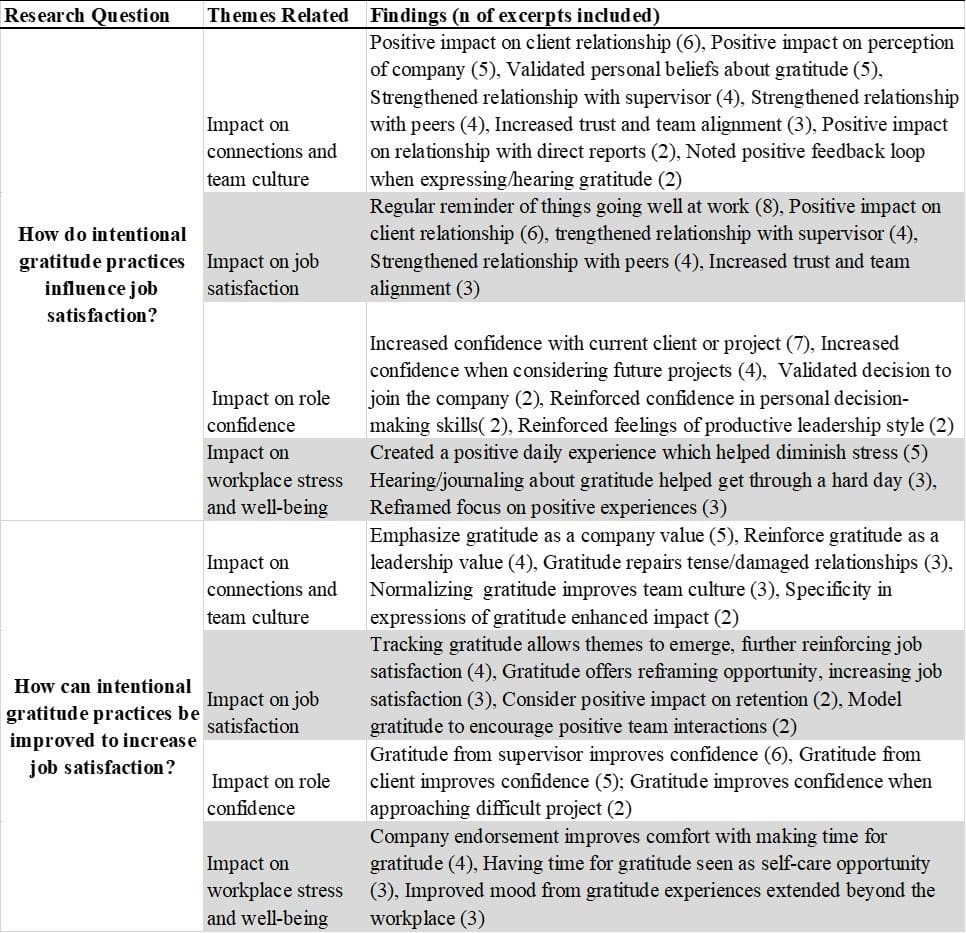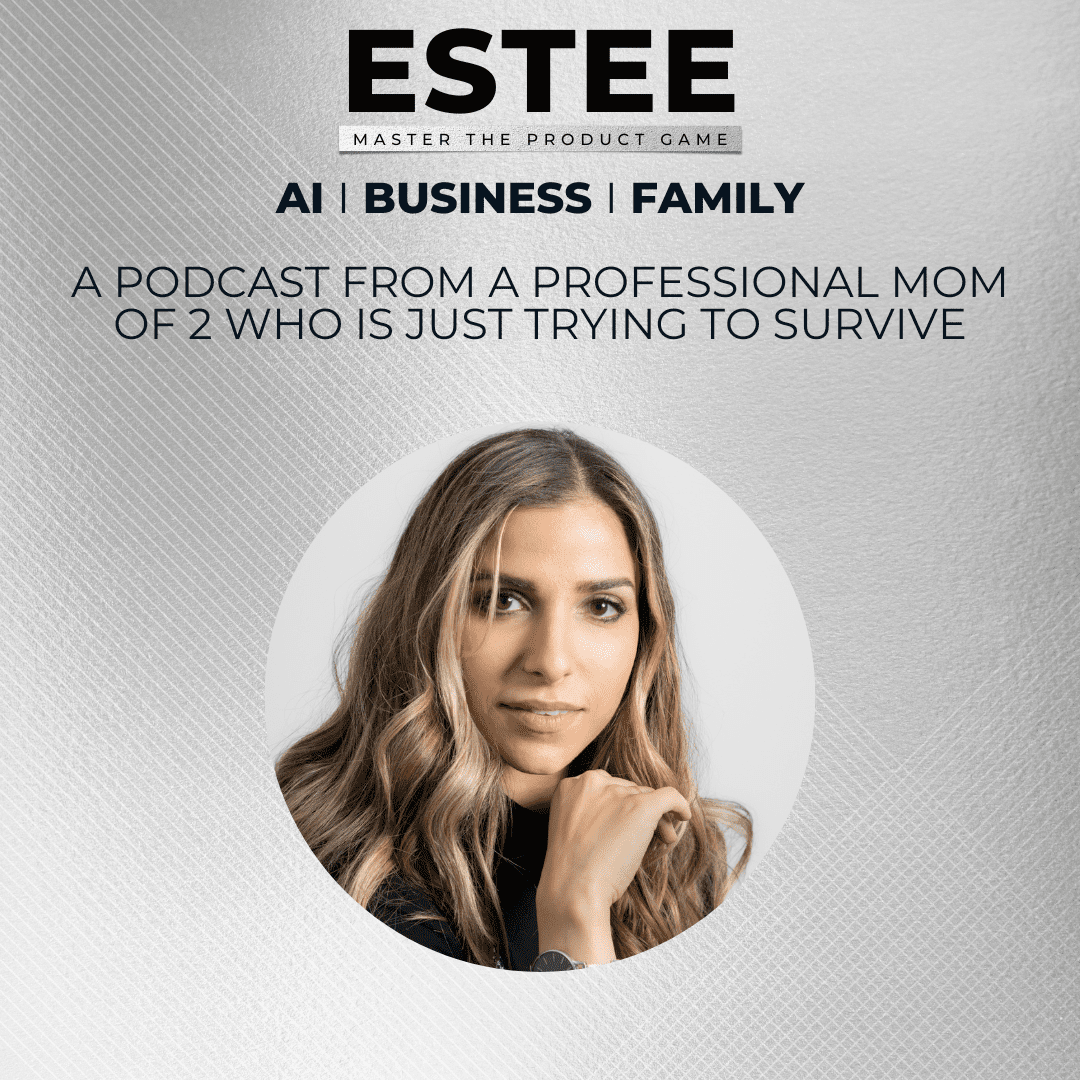Gratitude at Work – One Company’s Story
(Part 2 of a 5-part Series)
Most people do not regularly experience gratitude at work, either as recipients or as an active intentional practice of their own. And yet we know that just generally, when we feel appreciated, we feel and do better. What would happen if we purposefully made gratitude a regular part of the “ways of working”?
This question had been nagging me since I first started down the path of focusing on employee experience, and now I had the great fortune to partner with an organization who had already dabbled in a gratitude challenge for their employees, and they were interested in seeing what impact a more robust trial might have.
It was unknown how gratitude practices would influence job satisfaction or role confidence for the company I was working with. Their leadership was keenly interested in employee engagement and understanding the levers and mechanisms which drive this core metric. Further, with an eye to considering future opportunities for product offerings, the client organization wanted to gain an understanding of how gratitude might be positioned as part of a product offering in an employee wellness portfolio of services, specifically with an understanding of the return on energy investment for the individuals in an organization.


Current engagement scores have averaged in the 57-65% range over the last three years, with their 2020 survey reporting an average engagement of 70%. Although this represents some improvement, leadership was aiming for engagement scores in the 80-85% range. This desired engagement level was targeted in terms of both creating a culture that is attractive for prospective new talent—a key consideration in Innovation companies—as well as retaining talent in an industry where success relies on technical competence, and turnover was a significant risk to both.
The desired outcome of this study was to gain insight into the potential for gratitude to favorably impact individual employee job satisfaction and role confidence and to identify any appreciable differences in that impact on engagement scores that might be observed when comparing the result of internal and external gratitude practices to allow further longitudinal research on the impact of gratitude on employee engagement when practiced over long periods of time or by a larger percentage of employees at all levels of the organization. In short, the organization wanted to learn if gratitude could create a competitive advantage, and this study was the first step in the process.
For my research-happy peeps, for this work I opted for a qualitative case study design to explore how intentional gratitude practices could impact job satisfaction and how those practices could be improved to allow the partner organization to realize greater performance outcomes. There isn’t an easy way to quantify gratitude (or job satisfaction, actually…. I wish somebody would discover a cheek swab that was reliable for this stuff!) This study also aimed to fill a gap in existing research by extending knowledge on the impact of intentional gratitude practices in the workplace.
The conceptual framework for this study was built upon the theory that employee engagement is seen as an intersection of two forces: employee assessment of personal job satisfaction, and organizational artifacts which support well-being. Job satisfaction tends to increase when employees believe that the work they do has specific value or the results are seen as being worthwhile in some aspect, and when they have high-quality Relationships with the people with whom they work. You may have recently seen an influx of articles about belongingness or the importance of relationships at work, which are based on the same foundational work.
Gratitude in personal practices has been shown to improve life satisfaction and to strengthen relationships. Would it have a similar impact at work? That’s what we were hoping to learn, through the lens of two research questions:
- RQ1: How do intentional gratitude practices influence job satisfaction?
- RQ2: How can intentional gratitude practices be improved to increase job satisfaction?
The first question explored how intentional gratitude practices impacted job satisfaction for employees, and we identified several ways in which gratitude, both intrinsic and extrinsic, had a positive impact on not only job satisfaction but also employee confidence, well-being, and Stress. Study participants in both groups noted that gratitude had a wide variety of positive impacts on their relationships with clients, supervisors, colleagues, and their perception of the organization.


Participants noted the increase in trust and team alignment, including with group members they knew were not part of this study. Several participants also commented that they noticed a “ripple effect” with gratitude, where one person would express gratitude for a specific action or experience, and the recipient would often reciprocate with an expression of gratitude themselves, creating a positive feedback loop which improved team morale and culture. This was also credited with having a mitigating effect on workplace stress, both in terms of work-related stress as well as more generalized stress based on current global and societal issues, such as working remote due to the COVID-19 pandemic and other political and economic issues.
Another prevalent theme was that having the anchor of a daily gratitude practice helped both focus attention on what was going well, but also over time they noted themes emerging, which reinforced existing positive perspectives or mitigated stressful situations such as complex project challenges or the complications caused by working in a remote environment.
The second question explored ways that intentional gratitude practices could be improved to allow for the organization to continue to realize these benefits or even increase the impact of these practices for employees and the organization as a whole. All participants noted, sometimes multiple times, that it was helpful to have organizational support for taking time to pause and experience gratitude intentionally, noting that it can be difficult to prioritize non-billable activities such as self-care or gratitude, and they appreciated the company’s overt support for this activity.


Another common theme was the belief that gratitude should be considered a core leadership value not only at the executive level but also cascading through the tiers of the organization. Two participants mentioned that they felt it could be a positive addition to leadership development for newer people leaders within the organization, with multiple references to how receiving gratitude from one’s supervisor had an immediate and lasting positive impact for the recipient both in terms of job satisfaction and confidence.
Additional findings were that participants in supervisory roles noted the belief that gratitude as an intentional workplace practice could have a positive impact on employee turnover rates, as well being a beneficial opportunity to connect with and reinforce the supervisor-direct report relationship. This included the supervisor’s own observations and experiences, as well as having the opportunity to share positive client feedback with team members. This reinforces individual contributor sentiments that positive client feedback was beneficial, especially for those working on very small teams with limited interaction with others.
Next time we’ll look at some feedback from the people who actively experienced gratitude in their workplace during this study. How about you? Have you expressed or received gratitude at work lately? How did that impact you? I’d love to hear about your experiences!


(Source, Ratekin, S.A, “Gratitude as an Organizational Performance Lever”, Proquest, 2021)
Originally Published on https://www.happinessiscourage.com/blog/

























